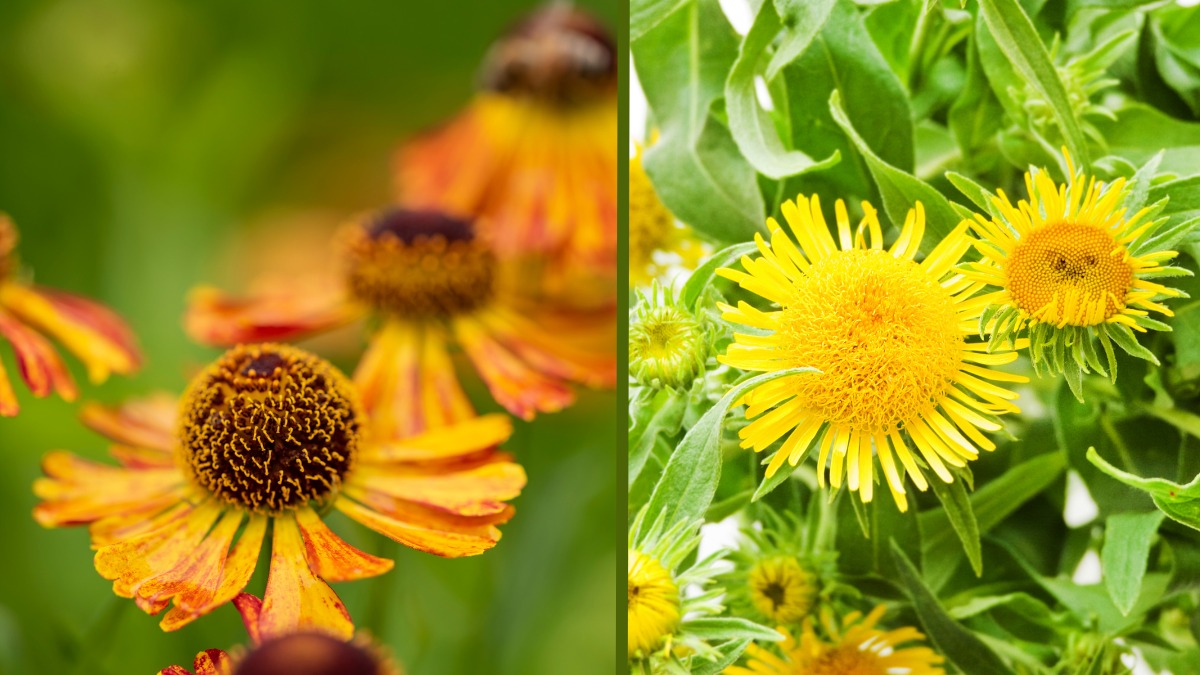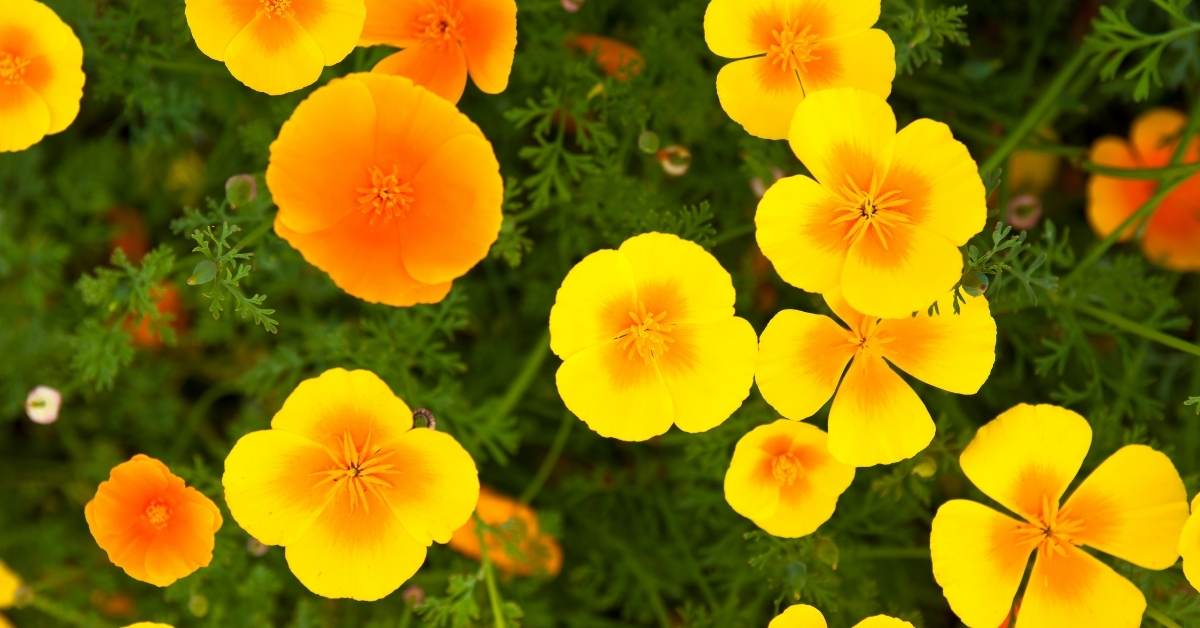In the vast world of flora, where beauty and utility intertwine, two remarkable plants stand out: Sneezeweed (Helenium) and Inula Viscosa. These botanical wonders have captured the attention of horticulturists, herbalists, and gardening enthusiasts alike, owing to their unique characteristics and diverse array of applications. As we delve into the captivating realm of these plants, we embark on a journey of exploration, comparing and contrasting their features, cultivation requirements, and benefits.
Sneezeweed Helenium vs Inula Viscosa
Sneezeweed, with its captivating name, holds an undeniable allure. Its botanical features are a testament to its remarkable nature. With vibrant blooms ranging from sunny yellows and warm oranges to deep reds, Sneezeweed showcases its enchanting colors through its petals, inviting admiration from all who behold it. Native to various regions, this resilient perennial thrives in a range of climates, making it a versatile addition to gardens and landscapes across the globe.
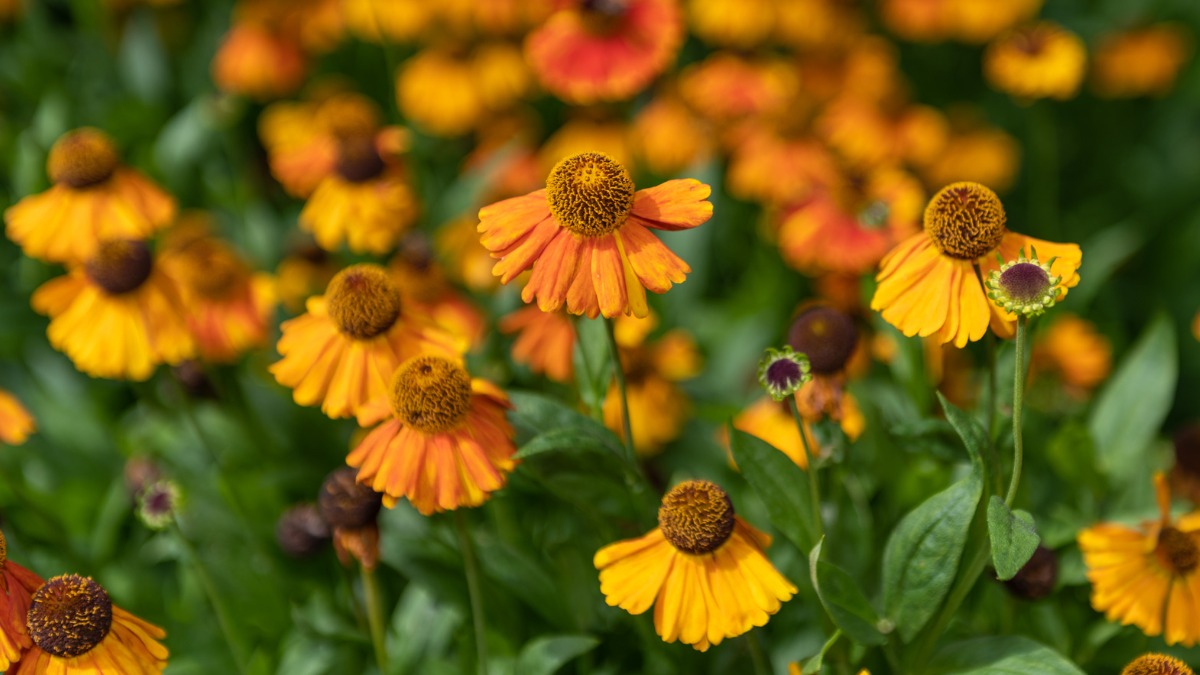
On the other hand, Inula Viscosa, also known as Sticky Inula, offers its own distinct charm. Its botanical features include stunning yellow flowers and glossy, dark green leaves, creating an eye-catching contrast. Native to select regions, Inula Viscosa graces us with its presence, showcasing a resilience that endures even in harsh conditions. Its adaptability makes it an intriguing choice for gardeners seeking a unique and captivating addition to their green spaces.
While Sneezeweed and Inula Viscosa share some similarities in terms of their botanical characteristics and medicinal properties, they also present noteworthy differences, including their native regions, cultivation requirements, and ornamental value. Understanding these nuances allows us to appreciate the individual beauty and utility of each plant, empowering us to make informed decisions when incorporating them into our gardens or exploring their potential therapeutic benefits.
Join us as we embark on an exploration of Sneezeweed and Inula Viscosa, uncovering their secrets and unearthing the wonders they hold. Through this comparative study, we aim to shed light on these exceptional plants, fostering a deeper appreciation for the world of horticulture and the remarkable gifts it bestows upon us.
II. Sneezeweed (Helenium)
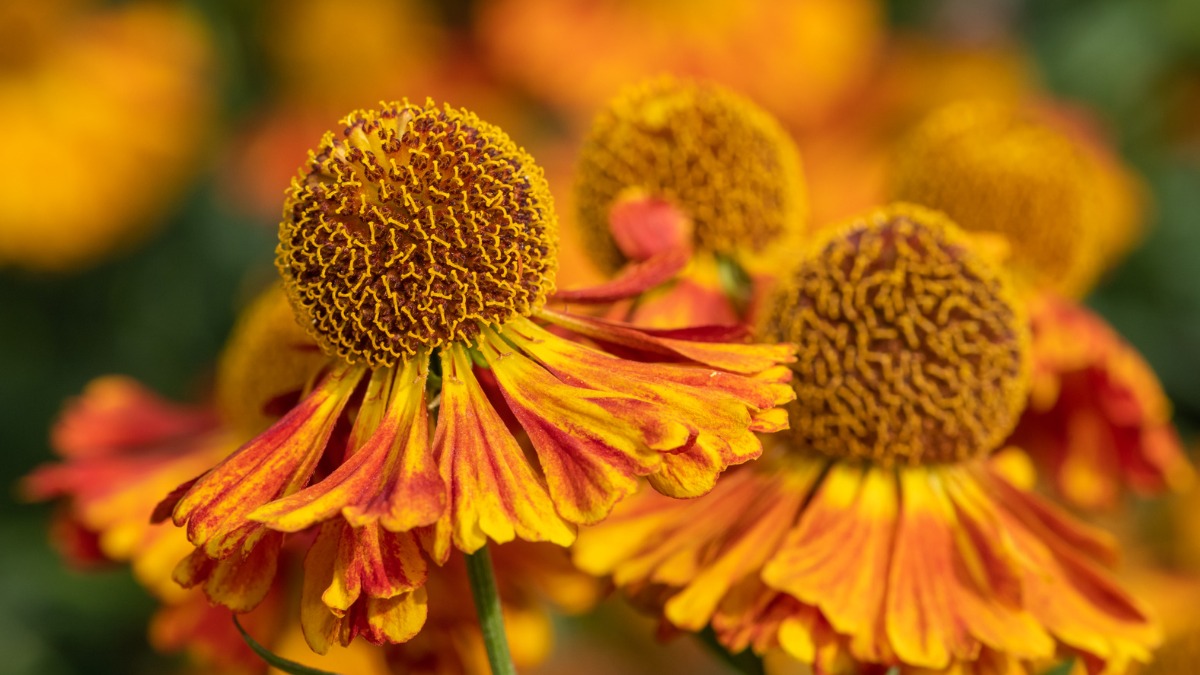
A. Description and Characteristics
When it comes to captivating plants that make a statement in any garden, Sneezeweed (Helenium) is a true standout. This remarkable plant boasts a wealth of intriguing botanical features that are sure to catch the eye of any passerby. With its striking blooms and unique foliage, Sneezeweed adds a touch of vibrancy and allure to any landscape.
- Botanical Features
Sneezeweed is characterized by its clusters of daisy-like flowers that come in a dazzling array of colors, ranging from sunny yellows and warm oranges to rich reds. The petals surround a prominent central disk, creating a beautiful and eye-catching display. The foliage of Sneezeweed consists of lance-shaped leaves that are typically deep green in color, providing an elegant backdrop to the vibrant blooms.
- Varieties and Cultivars
Sneezeweed encompasses a wide range of varieties and cultivars, each offering its own unique charm. Some popular cultivars include ‘Mardi Gras,’ known for its multicolored flowers, and ‘Sahin’s Early Flowerer,’ which blooms earlier in the season. Varieties such as ‘Helena Gold’ and ‘Ruby Tuesday’ showcase stunning golden and ruby-red hues, respectively. With such diversity, there is a Sneezeweed variety to suit every gardener’s taste.
B. Native Regions and Distribution
Sneezeweed is native to various regions across North and Central America. It can be found growing naturally in meadows, prairies, and other open spaces. Over time, Sneezeweed’s popularity has spread, and it is now cultivated in gardens and landscapes around the world. Its adaptability and resilience allow it to thrive in diverse climates and growing conditions.
C. Cultivation and Growing Conditions
To successfully cultivate Sneezeweed in your garden, it is important to provide it with the right growing conditions.
- Preferred Soil Type and pH
Sneezeweed thrives in well-drained soil that is rich in organic matter. It prefers a slightly acidic to neutral pH range of 6.0 to 7.0. Ensuring proper soil drainage is essential to prevent waterlogging and root rot.
- Sunlight and Watering Requirements
Sneezeweed is a sun-loving plant and requires full sun to flourish. It thrives in bright, direct sunlight, so choose a location in your garden that receives at least six hours of sunlight per day. When it comes to watering, Sneezeweed prefers regular moisture but is moderately drought-tolerant once established. Water deeply when the top inch of soil feels dry to the touch.
- Propagation Methods
Sneezeweed can be propagated through various methods, including seeds and division of established plants. If starting from seeds, sow them in early spring or late summer, ensuring they receive adequate moisture for germination. The division is typically done in early spring or fall when the plant is dormant. This allows for the creation of new Sneezeweed plants from the root clumps of mature specimens.
D. Uses and Benefits
Sneezeweed offers a range of uses and benefits that make it a valuable addition to any garden or landscape.
- Medicinal Properties and Traditional Uses
Throughout history, Sneezeweed has been renowned for its medicinal properties. Traditional uses include using its leaves and flowers to create herbal remedies for respiratory ailments, such as coughs, colds, and bronchitis. However, it is important to note that Sneezeweed should be used under the guidance of a knowledgeable herbalist or healthcare professional due to its potency.
- Ornamental Value in Gardens and Landscaping
With its vibrant blooms and unique foliage, Sneezeweed brings a burst of color and visual interest to gardens and landscapes. Its long-lasting flowers make it a popular choice for cut flower arrangements, adding a touch of elegance and charm to bouquets.
- Ecological Role and Wildlife Attraction
Sneezeweed plays a vital ecological role by attracting pollinators, including bees, butterflies, and other beneficial insects. Its nectar-rich flowers provide a valuable food source, supporting these important creatures and promoting a healthy ecosystem in your garden. Additionally, Sneezeweed can provide habitat and shelter for small wildlife, contributing to the biodiversity of your outdoor space.
As we delve deeper into the world of Sneezeweed (Helenium), we will continue to unravel its mysteries and explore the vast potential it holds. By understanding its description, characteristics, native regions, cultivation requirements, and uses, you will gain insights into this captivating plant and how it can enrich your gardening experience. So, join us on this journey and unlock the wonders of Sneezeweed as we embrace its beauty and discover its many benefits.
III. Inula Viscosa
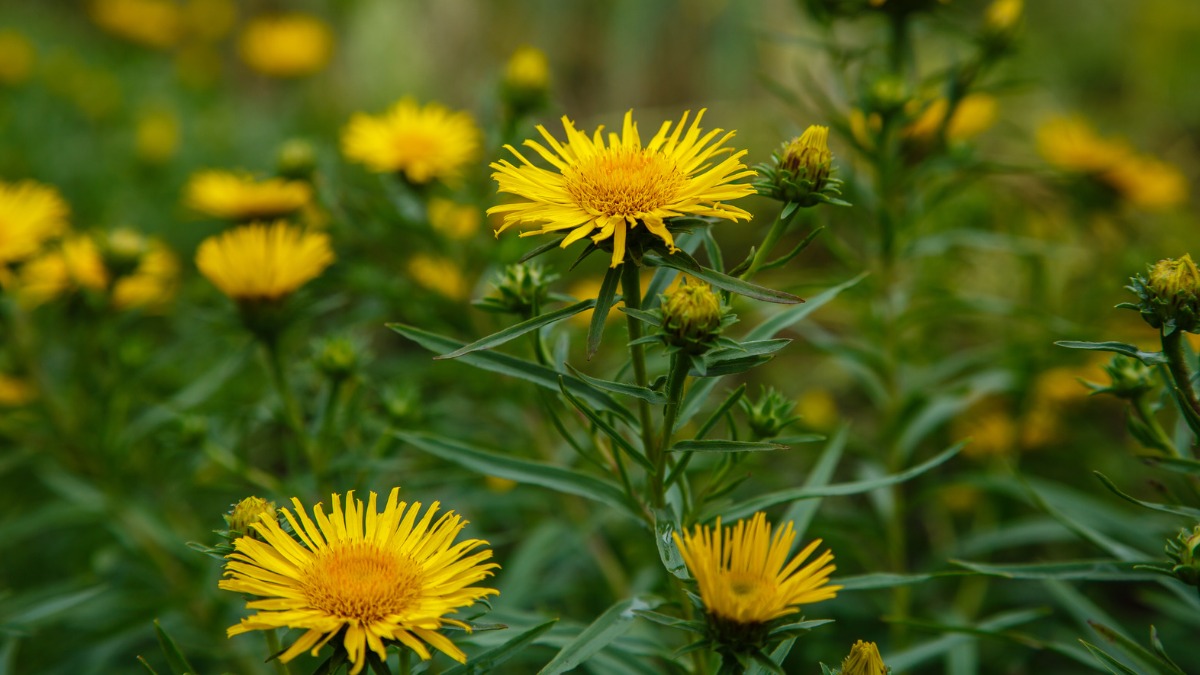
A. Description and Characteristics
Inula Viscosa, commonly known as Sticky Inula, is a captivating plant that enchants its distinct features and unique allure. These remarkable species exhibit a range of botanical characteristics that set them apart in the world of plants. From its charming yellow flowers to its glossy, dark green leaves, Inula Viscosa offers a visual delight that is sure to captivate any observer.
- Botanical Features
The most notable feature of Inula Viscosa is its stunning yellow flowers, which bloom in clusters and add a radiant touch to any landscape. These vibrant blossoms stand out against the backdrop of glossy, dark green leaves, creating a striking contrast that enhances the plant’s visual appeal. The leaves themselves are lance-shaped and possess a slightly sticky texture, giving rise to the common name “Sticky Inula.”
- Varieties and Cultivars
While Inula Viscosa does not have an extensive array of cultivated varieties, its natural diversity showcases variations in flower size, color intensity, and growth habits. Each variation offers its own unique charm and can be appreciated for its individual beauty.
B. Native Regions and Distribution
Inula Viscosa is native to select regions, primarily in the Mediterranean basin, including countries such as Spain, Portugal, Morocco, and Israel. It thrives in coastal areas and rocky habitats, showcasing its adaptability to challenging environments. Although its native distribution is concentrated, it has gained popularity and can be found in gardens and landscapes beyond its natural range.
C. Cultivation and Growing Conditions
To cultivate Inula Viscosa successfully, it is essential to provide it with optimal growing conditions that mimic its native habitat.
- Preferred Soil Type and pH
Inula Viscosa prefers well-drained soil that is moderately fertile and slightly acidic to neutral in pH. It can tolerate various soil types, including sandy or loamy soils, as long as the drainage is sufficient. Ensuring good soil structure and moisture retention is important for the plant’s health and development.
- Sunlight and Watering Requirements
Sticky Inula thrives in full sun to partial shade, requiring a minimum of 4-6 hours of direct sunlight per day for optimal growth and flowering. It is important to note that excessive shade may affect its blooming potential. When it comes to watering, Inula Viscosa prefers regular moisture but is also somewhat drought-tolerant once established. Watering should be done deeply, allowing the soil to dry slightly between waterings.
- Propagation Methods
Inula Viscosa can be propagated through various methods, including seed sowing and division of established plants. Sowing seeds in early spring or fall can yield new plants, but it requires patience as germination may take some time. Division of mature plants in early spring or fall allows for the creation of new Inula Viscosa specimens, ensuring their continued presence in your garden.
D. Uses and Benefits
Inula Viscosa offers a range of uses and benefits, making it a valuable addition to gardens and landscapes.
- Medicinal Properties and Traditional Uses
Throughout history, Inula Viscosa has been recognized for its medicinal properties. Its roots and aerial parts have been traditionally used in herbal remedies to address respiratory issues, digestive disorders, and skin conditions. It is important to consult with a knowledgeable herbalist or healthcare professional before using Inula Viscosa for medicinal purposes.
- Ornamental Value in Gardens and Landscaping
With its vibrant yellow flowers and glossy foliage, Inula Viscosa adds a touch of beauty and charm to gardens and landscapes. Its unique appearance and eye-catching blooms make it a wonderful choice for borders, rock gardens, or mixed perennial beds. Its ability
to tolerate challenging growing conditions also makes it suitable for coastal gardens or areas with poor soil quality.
- Ecological Role and Wildlife Attraction
Inula Viscosa contributes to the ecological balance of a garden by attracting pollinators such as bees and butterflies. Its nectar-rich flowers provide a valuable food source for these beneficial insects, promoting biodiversity and supporting the overall health of the ecosystem.
As we explore the realm of Inula Viscosa, we unveil its intriguing description, characteristics, native regions, cultivation requirements, and uses. By understanding the unique attributes of this captivating plant, you can unlock its potential in your garden and appreciate its ornamental value, potential medicinal benefits, and ecological contributions. Join us as we continue to uncover the wonders of Inula Viscosa and embrace its distinctive presence in the world of plants.
IV. Comparison between Sneezeweed and Inula Viscosa
A. Similarities
When it comes to comparing Sneezeweed (Helenium) and Inula Viscosa (Sticky Inula), we discover several intriguing similarities that enhance our understanding of these remarkable plants.
- Botanical Features and Appearance
Both Sneezeweed and Inula Viscosa exhibit captivating blooms that add vibrant colors to any garden. Sneezeweed showcases daisy-like flowers in shades of yellow, orange, and red, while Inula Viscosa boasts stunning clusters of yellow blossoms. These eye-catching flowers serve as focal points and bring visual interest to landscapes.
- Medicinal Properties and Traditional Uses
Both Sneezeweed and Inula Viscosa have a history of traditional medicinal uses. Sneezeweed has been valued for its medicinal properties in addressing respiratory ailments, such as coughs and colds. Similarly, Inula Viscosa has been utilized in herbal remedies for respiratory issues and various other health concerns. It is important to note that the medicinal use of these plants should be done under the guidance of experts.
- Ecological Significance
Both Sneezeweed and Inula Viscosa play an important role in supporting the ecosystem. Their vibrant flowers attract pollinators, including bees and butterflies, aiding in the pollination of other plants in the vicinity. This contribution to the local ecosystem promotes biodiversity and helps sustain the populations of beneficial insects.
B. Differences
While Sneezeweed and Inula Viscosa shares some similarities, they also possess distinct characteristics that set them apart from each other.
- Native Regions and Distribution
Sneezeweed is native to various regions of North and Central America, while Inula Viscosa is primarily native to Mediterranean regions such as Spain, Portugal, and Morocco. Sneezeweed has a wider distribution, cultivated in gardens worldwide, while Inula Viscosa’s presence outside its native range is more limited.
- Cultivation Requirements and Growing Conditions
Sneezeweed is known for its adaptability and can thrive in different climates, tolerating a range of growing conditions. It prefers well-drained soil and requires regular watering. In contrast, Inula Viscosa has a preference for slightly acidic to neutral soil and moderate fertility. It thrives in full sun to partial shade and has a higher tolerance for challenging growing conditions, such as coastal areas and rocky habitats.
- Ornamental Value and Garden Suitability
Sneezeweed is highly valued for its ornamental value and is widely cultivated in gardens and landscaping projects. Its vibrant blooms and attractive foliage make it a popular choice for adding visual impact and color. On the other hand, while Inula Viscosa possesses its own charm, it may have a more limited presence in ornamental gardens and landscapes, primarily due to its specific native regions and specialized growing requirements.
By understanding these differences, gardeners can make informed decisions about incorporating Sneezeweed or Inula Viscosa into their gardens based on their specific preferences, growing conditions, and desired ornamental impact.
As we explore the similarities and differences between Sneezeweed and Inula Viscosa, we gain a deeper appreciation for their unique qualities and their potential contributions to gardens, landscapes, and overall well-being. By embracing their individual attributes, we can make informed choices and create diverse and captivating outdoor spaces.
Conclusion
The exploration of Sneezeweed and Inula Viscosa does not end here. These plants hold immense potential for further research and exploration. The continued study can unveil additional medicinal properties, expand the range of cultivated varieties, and enhance our understanding of their ecological contributions.
Furthermore, investigating the genetic diversity, molecular aspects, and conservation status of Sneezeweed and Inula Viscosa can contribute to their long-term preservation and sustainable utilization. Continued research and exploration ensure that we can fully appreciate and harness the benefits these plants offer.
In conclusion, Sneezeweed (Helenium) and Inula Viscosa (Sticky Inula) are fascinating plants with unique qualities and contributions. By understanding their similarities and differences, we can embrace their beauty, utilize their medicinal properties, and create harmonious and biodiverse landscapes. Let us continue to explore the wonders of these plants, deepening our knowledge and enriching our connection with nature.
